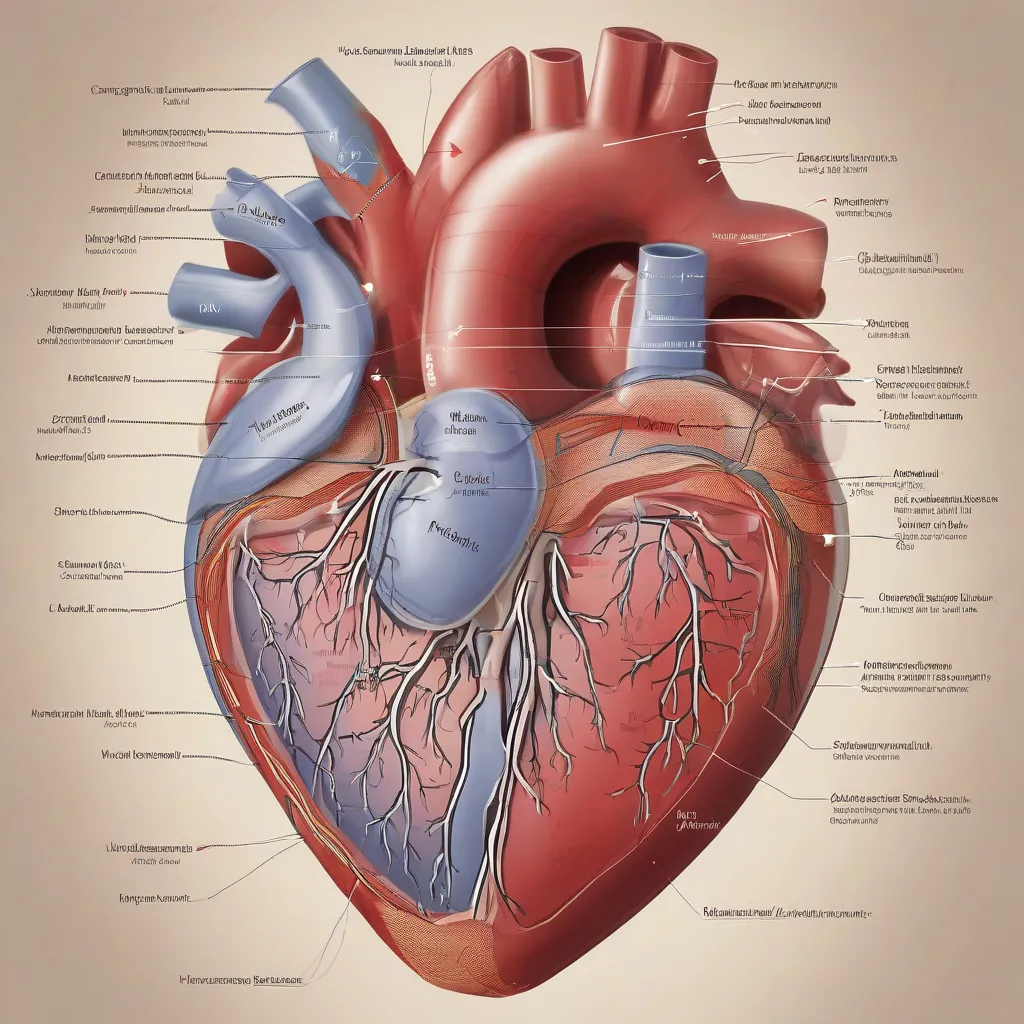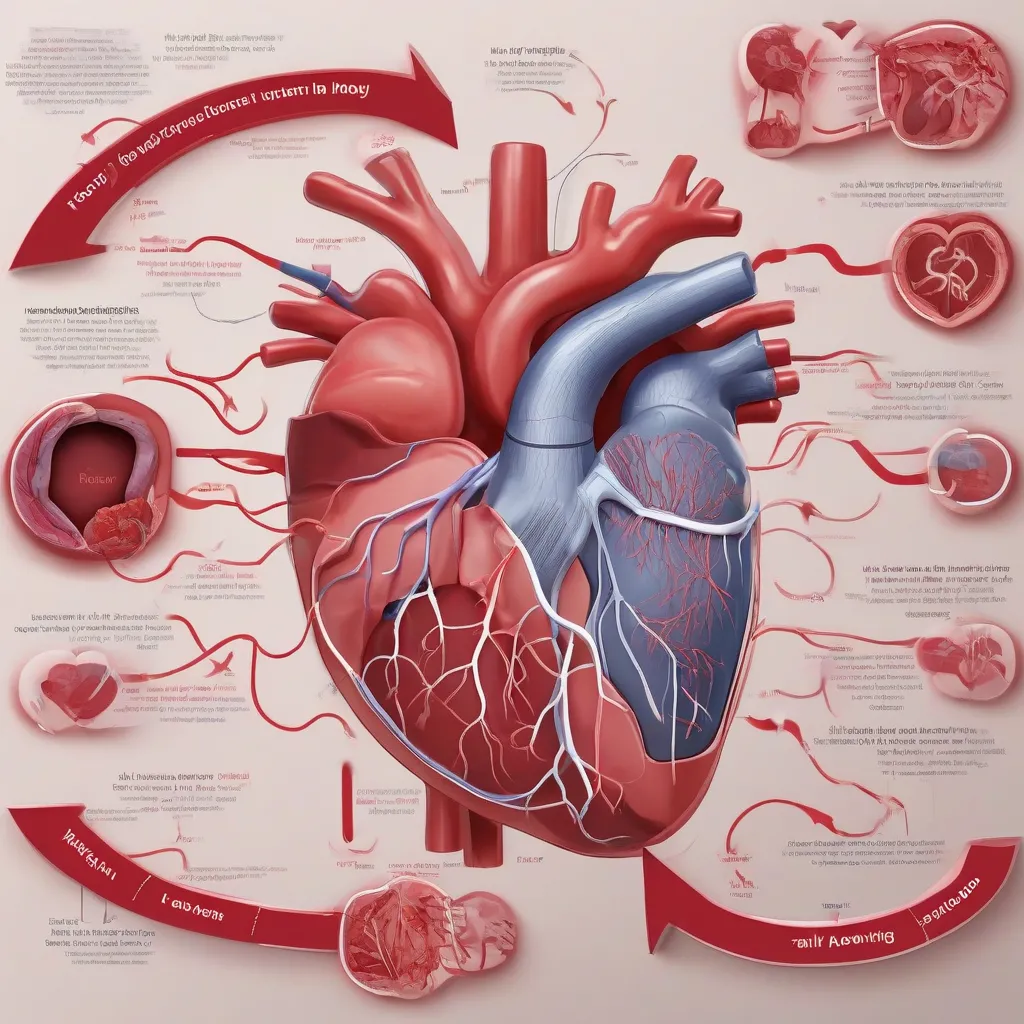Have you ever stood at the edge of the Grand Canyon, marveling at the Colorado River carving its way through the rock? Imagine that river is your blood, and the canyon is your heart. Just like the river’s ceaseless flow, your blood embarks on a continuous journey through the chambers and valves of your heart, delivering life-sustaining oxygen and nutrients to every corner of your body.
Understanding the Heart’s Chambers and Valves
Your heart, a powerful muscle nestled slightly left of center in your chest, isn’t just a symbol of love and emotion. It’s a highly efficient pump, tirelessly propelling blood through two interconnected circulatory systems:
- Pulmonary Circulation: This shorter loop carries deoxygenated blood to the lungs, where it picks up oxygen and releases carbon dioxide.
- Systemic Circulation: This longer, more demanding circuit carries oxygen-rich blood from the lungs to the rest of the body, delivering essential nutrients and removing waste products.
Think of your heart as a grand house with four distinct chambers, each playing a crucial role in directing the flow of blood:
- Right Atrium: The “receiving room” for deoxygenated blood returning from the body.
- Right Ventricle: This chamber receives blood from the right atrium and pumps it to the lungs.
- Left Atrium: The “receiving room” for oxygenated blood returning from the lungs.
- Left Ventricle: The heart’s powerhouse, pumping oxygen-rich blood to the rest of the body.
Separating these chambers are four one-way valves, acting like diligent gatekeepers, ensuring blood flows in the right direction and preventing backflow:
- Tricuspid Valve: Situated between the right atrium and right ventricle.
- Pulmonary Valve: Located between the right ventricle and the pulmonary artery, leading to the lungs.
- Mitral Valve: Situated between the left atrium and left ventricle.
- Aortic Valve: Positioned between the left ventricle and the aorta, the body’s main artery.
The Intricate Journey of Blood
Now, let’s embark on the incredible journey of a single blood cell as it navigates through your heart:
- Arrival at the Right Atrium: Our weary traveler, depleted of oxygen, arrives at the right atrium after a long journey through the body.
- Passing Through the Tricuspid Valve: The tricuspid valve swings open, allowing the blood cell to flow into the right ventricle.
- Pumping to the Lungs: The right ventricle contracts, propelling our blood cell through the pulmonary valve and into the pulmonary artery, headed towards the lungs for a revitalizing breath of fresh oxygen.
- Oxygenation in the Lungs: In the intricate network of capillaries within your lungs, our blood cell exchanges carbon dioxide for a fresh supply of oxygen, turning from a dull blue to a vibrant red.
- Returning to the Left Atrium: Rejuvenated and oxygen-rich, our blood cell flows through the pulmonary veins, arriving back at the heart’s left atrium.
- Passing Through the Mitral Valve: The mitral valve opens, granting passage into the left ventricle.
- Pumping to the Body: The powerful left ventricle contracts, sending our blood cell surging through the aortic valve and into the aorta, ready to deliver life-giving oxygen and nutrients throughout the body.
This remarkable journey repeats itself countless times every day, a testament to the tireless work of your heart.
Taking Care of Your Heart’s Journey
Just like a well-maintained car ensures a smooth and enjoyable road trip, taking care of your cardiovascular health is paramount for a long and healthy life.
- Embrace a Heart-Healthy Diet: Nourish your body with a diet rich in fruits, vegetables, whole grains, and lean proteins. Think of it as choosing scenic routes and avoiding greasy rest stops on your journey.
- Engage in Regular Physical Activity: Aim for at least 30 minutes of moderate-intensity exercise most days of the week. It’s like choosing a scenic hike instead of a sedentary bus tour for your heart.
- Manage Stress: Engage in stress-reducing activities such as yoga, meditation, or spending time in nature. Consider it a calming detour from the hustle and bustle of daily life.
 Heart Chambers
Heart Chambers
 Blood Flow Cycle
Blood Flow Cycle
FAQs About Blood Circulation
Q: How much blood does the heart pump in a day?
A: The average heart pumps around 1,800 gallons of blood per day! That’s enough to fill a small swimming pool.
Q: Can stress really affect my heart?
A: Yes, chronic stress can contribute to high blood pressure and other risk factors for heart disease.
Q: What’s the best way to monitor my heart health?
A: Regular check-ups with your doctor and maintaining a healthy lifestyle are crucial for monitoring and maintaining heart health.
Embracing the Journey
Understanding How Blood Travels Through The Heart allows us to appreciate the intricate workings of our own bodies. Just like a well-planned itinerary leads to an unforgettable trip, prioritizing heart health ensures a long and vibrant journey through life.
For further exploration of the human body’s wonders, delve into the fascinating world of lipoproteins at https://travelcar.edu.vn/a-vldl-is-a-lipoprotein-that-travels-from/. Or, if you’re curious about the body’s intricate transportation network, embark on a journey to discover how blood travels throughout the body at https://travelcar.edu.vn/how-does-the-blood-travel-through-the-body/.

